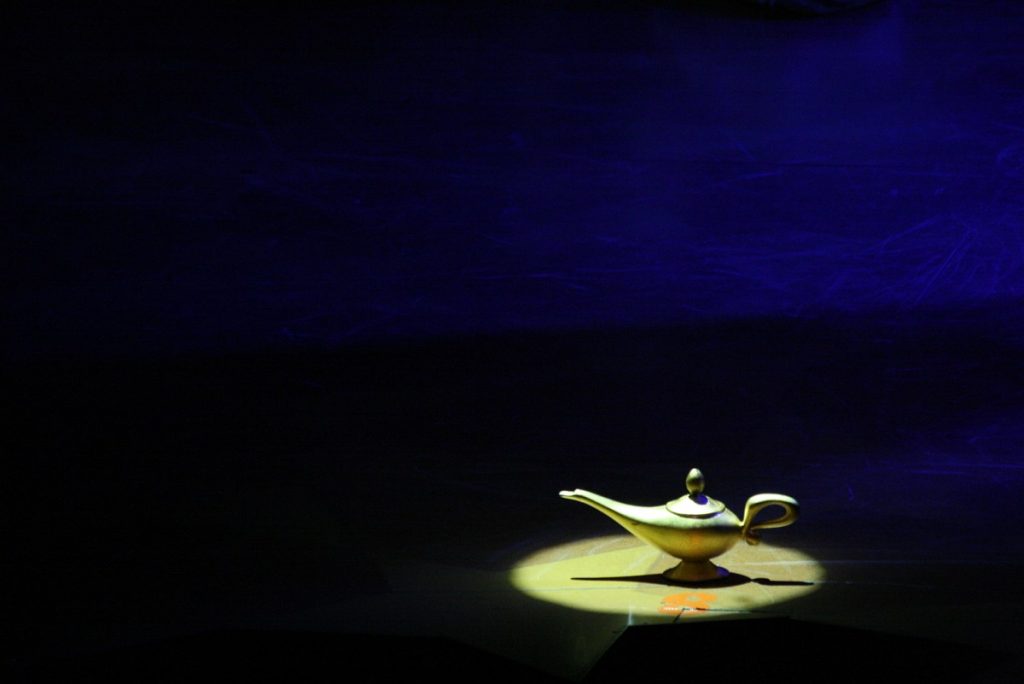Last week, Disney Studios released a live-action version of its 1990s animated film, Aladdin. The live-action film has been mired in controversy even as the studio attempted to approach the remake with a kind of cultural sensitivity that the older version is infamous for lacking. These efforts include some seemingly progressive moves like actually casting a person of Arab descent as Aladdin (although where is Agrabah actually?). But there are also a series of missteps including spray tanning extras and having only one Black character with a real speaking role play a supernatural figure bringing up the trope of the magical negro. It is clear that despite the experts and community folks who were brought in to consult on the film, there were just some things, like the fact that Arabs come in all colors, that the studio just couldn’t let go of. There are already a stream of celebrations and critiques on the contents of the film but the questions I’m more interested in asking are why Aladdin, in the first place, especially on the heels of such boundary-breaking films like Coco and Black Panther? Why choose a film that really can’t be fixed as a means to ostensibly diversify your films and engage with new ethnic and religious communities? What might this choice by one studio say about Hollywood’s diversity efforts overall?
I, like every other Black person potentially on the planet, looked forward to Black Panther with anticipation. And save the opening Boko Haram scene, which I addressed elsewhere, Black Panther did not disappoint. Likewise, neither did Coco. I am Latina but not Mexican, and while the film failed to have any visible Afro-Mexicanx representation, as I anticipated, I fell in love with the intentional authenticity the film offered. And outside the imposition of a 20-minute Frozen preview, there were no White people—no random White friend making a cameo and no cultural acrobatics to make the story White-people friendly. Both Coco and Black Panther resonated with their respective ethnic communities not only because of who was in front of the camera, but also because of who was behind it. This was a theme in much of the talk around the films themselves that made them apparent heralds of a Hollywood that takes diversity seriously. Black Panther directors, writers, executive producer, costume designer, and other production staff were all Black people. And while Coco was not as all-Latinx-everything as Black Panther was Black, in addition to the all Latinx cast, the film director recruited Anthony Molina, a Mexican American, to be a lead screenwriter and had the film’s staff visit Mexico several times to learn about the cultures the film intended to depict. This seems like it might be a trend at a major studio like Disney if recent news about Gina Rodriguez’s new series on a Cuban-American pre-teen is any indication.

>Flickr/Carlos
Then there’s Aladdin, released during Ramadan, of all times. The film is directed by Guy Ritchie, a White man, the writers room from all accounts had no Middle Eastern or Muslim writers, the film’s music was created by three White men and there is even a totally unnecessary White character in the film.
The difference here is striking. Disney did engage Arab American and American Muslim communities through community advisory boards, on which I briefly participated. But that engagement from my vantage point was more about damage control than the kind of intentional attempt to shift depictions of Black people and Mexicans that came with Black Panther and Coco (which is why I declined to participate further). Community advisories are all good and well but why not engage Arab American and American Muslim writers and directors like Darine Hotait, Nizar Wattad, and Suha Araf, or Sanaa Hamri, Sameer Gardezi, Aminah Bakeer Abdul-Jabbaar, Nia Malika Dixon, Qasim Basir, Musa Syeed and Nijla Mumin to create an original story or breathe new life into different regional tales, like the love story of Layla and Majnun or the epic of Antar al-Shaddad or the emperor and richest man in history, Mansa Musa?
Some might say that this is because Middle Eastern and Muslim communities are the new target of the American race scene, so negative or one-dimensional portrayals are not yet distasteful in polite company. Or that Hollywood just is not there yet with these communities, who are “new” to the motion picture scene. I don’t think that’s what’s at play here. Black Panther and Coco are great films but haven’t replaced the standard fare of Hollywood films that traffic in racial and ethnic stereotypes or absences. Also these communities aren’t new to motion pictures—Hollywood has been depicting Arab and/or Muslim characters since the early days of cinema. And if Hollywood is really committed to diversity, why weren’t the strategies deployed in Coco and Black Panther taken up in this instance?
I think the real issue is Hollywood’s diversity efforts themselves—they are half hearted, at best. While, Coco, Black Panther and, more recently, Crazy Rich Asians were major studio films, they weren’t easily greenlit, but took effort by creatives of color and the communities behind them to get made. And they still remain “one-offs.” We have no guarantees Hollywood will invest in more films like these. Meanwhile, I just saw the trailer for the sequel to a movie about White folks and their dogs, (Allah take the wheel!) which makes Aladdin, more than anything, another example of a Hollywood that talks a good game but has yet to prove it is really going to walk the walk.
Note: Featured image courtesy of Flickr/Trending Topics 2019.





